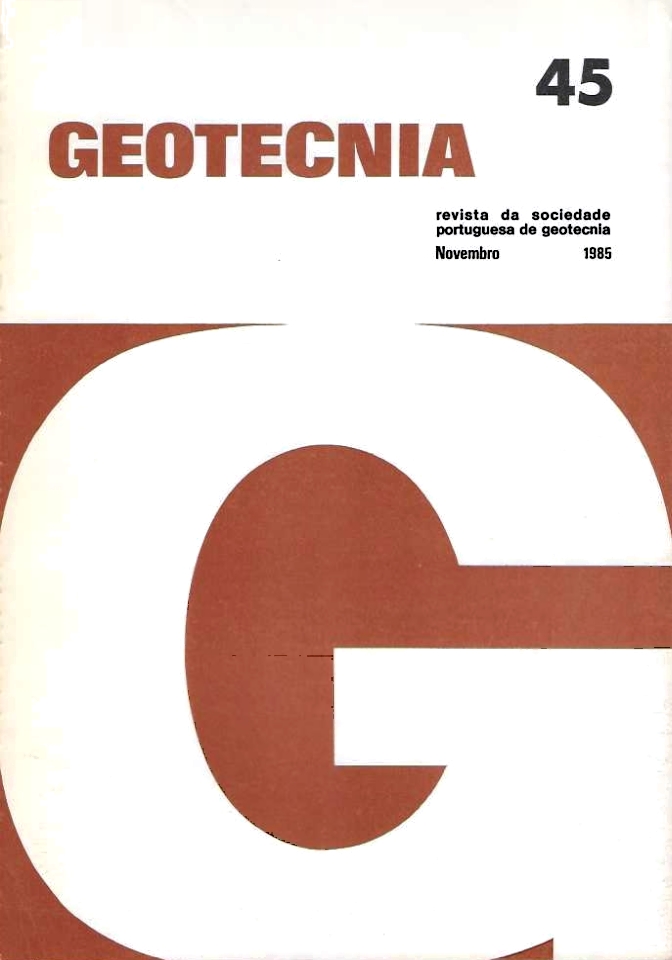Foundation treatment of Pequenos Libombos dam
DOI:
https://doi.org/10.14195/2184-8394_45_5Abstract
The Pequenos Libombos dam located on the Umbeluzi river is intended for water supply to Maputo, for irrigation of an area of 16 000 ha and for flood control. [t is a composite earth and concrete dam, 46 m high, with a crest length of about 1600 m. lts effective reservoir capacity will amount to 350x106m3. The dam is now being constructed, for wich river diversion began in May 1983.
From the geological point of view, the foundation of the dam consist of rhyolites in the banks and of silt-sand alluvia overlying basalts in the valley.
Interbedded with the basalts there are considerably weathered to moderately weathered volcanic tuffs whose thickness varies from two tens of centimeters to about 2 m. These tuff «Iayers» do not display lateral continuity.
n the Ieft bank a bentonitic pocket was detected which resulted from alteration of the rhyolite. Due to the permeable alluvia which may reach 20 m in thickness, control of seepage in lhe foundation h ad to be studied. At last a final decision had to be taken: either to perfom a diaphragm wan associated with a partial cut off, or to perform a total cut off. The reasons behind the choice of the second alternative are analysed taking into account the multiple geotechnical variables at stake: location, water table level, permeability and deformability of alluvia, possible occurence of blocks near the bedrock, etc.
The solution chosen is dealt with in detail both as regards execution and a suitable transition between the grouting system of the alluvia foundation (cut off with localized grouting of alluvia) and of the bedrock (grout blanket, concrete slab and deep grout curtain).
The spillway is founded on sound basalt. Taking into account watertightening and stability, foundation treatment solutions, fit for the geotechnical characteristics of this rock mass, where addopted, which are presen1ed in this paper.




